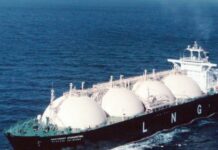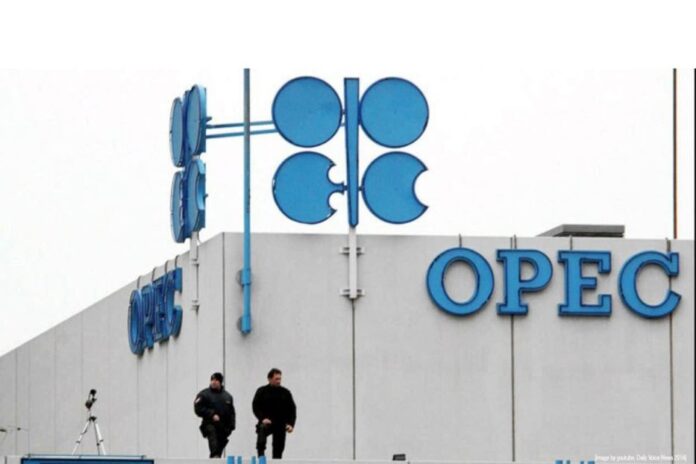- Fears of an Israeli attack on Iranian oil facilities to deprive it of its main source of revenue have driven oil prices higher
LONDON: Global oil market participants have switched to dreading a shortage in fuel from focusing on an impending oversupply in just two days this week.
After Israel attacked Iran and Tehran pledged to retaliate, oil prices jumped as much as 13% to their highest since January as investors priced in an increased probability of a major disruption in Middle East oil supplies.
Part of the reason for the rapid spike is that spare capacity among OPEC and allies to pump more oil to offset any disruption is roughly equivalent to Iran’s output, according to analysts and OPEC watchers.
Saudi Arabia and the United Arab Emirates are the only OPEC+ members capable of quickly boosting output and could pump around 3.5 million barrels per day (bpd) more, analysts and industry sources said.
Iran’s production stands at around 3.3 million bpd, and it exports over 2 million bpd of oil and fuel.
There has been no impact on output so far from Israel’s attacks on Iran’s oil and gas infrastructure, nor on exports from the region.
But fears that Israel may destroy Iranian oil facilities to deprive it of its main source of revenue have driven oil prices higher. The Brent benchmark last traded up nearly 7% at over $74 on Friday.
An attack with a significant impact on Iranian output that required other producers to pump more to plug the gap would leave very little spare capacity to deal with other disruptions – which can happen due to war, natural disasters or accidents.
And that with a caveat that Iran does not attack its neighbours in retaliation for Israeli strikes.
Iran has in the past threatened to disrupt shipping through the Strait of Hormuz if it is attacked. The Strait is the exit route from the Middle East Gulf for around 20% of the world’s oil supply, including Saudi, UAE, Kuwaiti, Iraqi and Iranian exports.
Iran has also previously stated that it would attack other oil suppliers that filled any gap in supplies left due to sanctions or attacks on Iran.
“If Iran responds by disrupting oil flows through the Strait of Hormuz, targeting regional oil infrastructure, or striking U.S. military assets, the market reaction could be much more severe, potentially pushing prices up by $20 per barrel or more,” said Jorge Leon, head of geopolitical analysis at Rystad and a former OPEC official.
Change In Calculus
The abrupt change in calculus for oil investors this week comes after months in which output increases from OPEC and its allies, a group known as OPEC+, have led to investor concern about future oversupply and a potential price crash.
Saudi Arabia, the de facto leader of OPEC, has been the driving force behind an acceleration in the group’s output increases, in part to punish allies that have pumped more oil than they were supposed to under OPEC+ agreements.
The increases have already strained the capacity of some members to produce more, causing them to fall short of their new targets.
Even after recent increases, the group still has output curbs in place of about 4.5 million bpd, which were agreed over the past five years to balance supply and demand.
But some of that spare oil capacity – the difference between actual output and notional production potential that can be brought online quickly and sustained – exists only on paper.
After years of production cuts and reduced oilfield investment following the COVID-19 pandemic, the oilfields and facilities may no longer be able to restart quickly, said analysts and OPEC watchers.
Western sanctions on Iran, Russia and Venezuela have also led to decreases in oil investment in those countries.
“Following the July hike, most OPEC members, excluding Saudi Arabia, appear to be producing at or near maximum capacity,” J.P. Morgan said in a note.
Outside of Saudi Arabia and the UAE, spare capacity was negligible, said a senior industry source who works with OPEC+ producers.
“Saudis are the only ones with real barrels, the rest is paper,” the source said. He asked not to be named due to the sensitivity of the matter.
Paper Barrels
Saudi oil output is set to rise to above 9.5 million bpd in July, leaving the kingdom with the ability to raise output by another 2.5 million bpd if it decides to.
That capacity has been tested, however, only once in the last decade and only for one month in 2020 when Saudi Arabia and Russia fell out and pumped at will in a fight for market share.
Saudi Arabia has also stopped investing in expanding its spare capacity beyond 12 million bpd as the kingdom diverted resources to other projects.
Russia, the second-largest producer inside OPEC+, claims it can pump above 12 million bpd.
JP Morgan estimates, however, that Moscow can only ramp up output by 250,000 bpd to 9.5 million bpd over the next three months and will struggle to raise output further due to sanctions.
The UAE says its maximum oil production capacity is 4.85 million bpd, and told OPEC that its production of crude alone in April stood at just over 2.9 million bpd, a figure largely endorsed by OPEC’s secondary sources.
The International Energy Agency, however, estimated the country’s crude production at about 3.3 million bpd in April, and says the UAE has the capacity to raise that by a further 1 million bpd. BNP Paribas sees UAE output even higher at 3.5-4.0 million bpd.
“I think spare capacity is significantly lower than what’s often quoted,” said BNP analyst Aldo Spanjer.
The difference in ability to raise production has already created tensions inside OPEC+.
Saudi Arabia favours unwinding cuts of about 800,000 bpd by the end of October, sources have told Reuters.
At their last meeting, Russia along with Oman and Algeria expressed support for pausing a hike for July.























